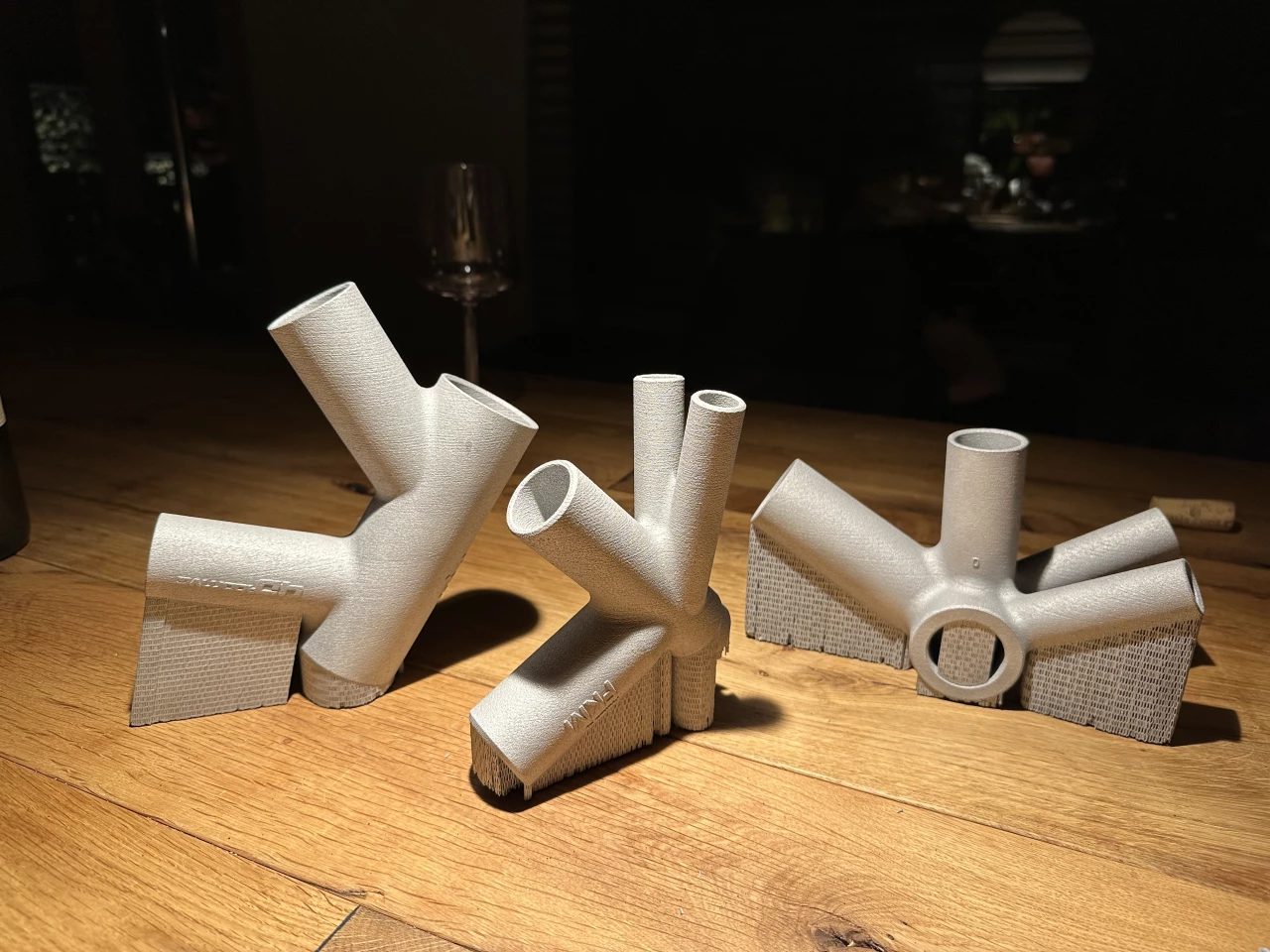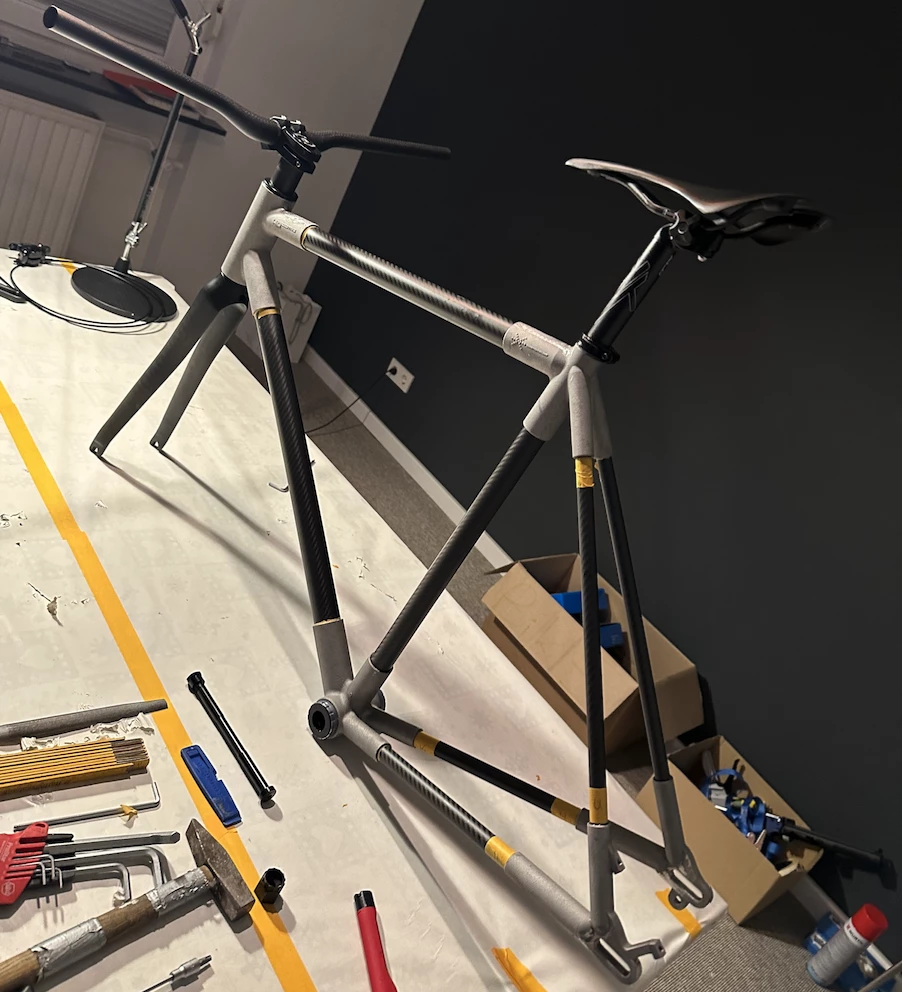For the first time, German company Core Technologie GmbH has put its 3D printing software to work in creating an everyday product. The result is a single-speed bicycle that ranks among the lightest out there, barely pushing the scale needle past the minimum weight of a Tour de France bike. Core also stresses that the bike is the result of a simpler, automation-friendly modular construction process that pairs aluminum connector hubs with carbon fiber tubes. It could encourage a faster, more local breed of bicycle manufacturing not as dependent on the now-infamous supply chain.
Core Technologie used its computer-assisted design (CAD) and 3D printing software to bring its bike from conception to working prototype over a two-month period. The bike uses a tube + connection hub format similar to the ultra-modular REF Essential we looked at a few weeks ago or the high-priced Bastion 3D-printed titanium and carbon custom bikes we looked at a few years back.
In this case, Core uses 3D-printed aluminum hubs around the headset, bottom bracket, seat and rear dropouts to connect together carbon fiber tubes supplied by fellow German company Carbonforce. It used its 4D Additive hardware to optimize hub wall thickness and surface texture before securing the hubs and tubes together with an aircraft-grade adhesive. The bike has a 56-cm frame size.

Much like REF's design, the idea behind Core's build is to create a high-performance two-wheeler that's faster, easier and more affordable to build than a traditional carbon frame. Perhaps even more relevant to the contemporary post-pandemic bike industry, the process relies less on the supply chain.
Core says the complete single-speed bike weighs in at a mere 7.1 kg (15.6 lb), which brings to mind the 6.8-kg (15-lb) minimum racing bike limit imposed by the International Cycling Union (UCI). In fact, an 11-bike 2023 Tour de France weigh-in performed by Bike Radar found an average weight just under 7.5 kg, so Core can rightfully say its bike is lighter than a Tour de France racer.
The Core bike is also slightly lighter than the Fabike C3, a high-end Italian carbon fiber single speed. It's not quite as lightweight as the sub-6.8-kg quote for the fully geared 3D-printed-titanium and carbon Road bicycle from Bastion, but it presumably wouldn't cost AU$28,000 (approx. US$18,300), either.

Core Technologie says the bike was designed to accommodate a cog set so it could be easily built from a single speed to a multi-speed commuter. And, of course, the company says it's been a pleasure to ride, bringing smiles to the faces of all who've tested it.
Sadly, we end right where we began, with a software company creating a proof-of-concept bicycle. There's no immediate future for the bicycle itself, but perhaps the project will catch the eye of a bicycle manufacturer or ambitious startup that could put Core's software products to use in creating locally built modular velos.
Source: Core Technologie







